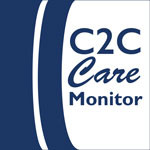Archival Holdings Maintenance question
Tagged: archives, preservation
- This topic has 5 replies, 4 voices, and was last updated 8 years, 6 months ago by
Evelyn.
-
AuthorPosts
-
-
October 19, 2015 at 11:30 am #134173
Cassandra
ParticipantI am a graduate student in museum studies and am currently interning at an archive. Throughout my internship, I have noticed that holdings maintenance often takes a back seat to the creation of descriptions and finding aids. I understand that the content is important and that we are all under a time crunch, but it seems odd to me that we are not placing as much of an emphasis on collections preservation. My question therefore, is this common practice in other archives? If so, are we doing all that we can to preserve our archival collections? In other words, is it better to do a little given our lack of time and resources, than nothing, or should we be doing all we can to ensure that we are following best practices?
-
October 19, 2015 at 12:50 pm #134174
 Miriam CentenoParticipant
Miriam CentenoParticipantCassandra, I think that your post brings out many issues that now seem to be perennial questions on the ability of archives to keep up with the processing and the preservation of their materials.
As a preservation worker, I have the luxury of relying quite heavily on that initial processing done by the archivist, so I can do my work of repair and rehousing, knowing that I am not disturbing the original order and that there is some documentation that is attached to the items that I am working with.
Many archivists do not have the budget and staff support to do both and concentrate on the organization of the information now, while looking for further funding to help take care of the physical care of the collection later. As I see it the first task of preservation is having intellectual control of your holdings.
I hope that other colleagues can contribute to the discussion to other views on this topic.
Below are some resources for those who may be interested in learning more about these issues:
1. NARA Holding Maintenance– National Archives and Records Administration 2004 – N-09-HLDMNT training video
2. More product, less process : revamping traditional archival processing
Greene, Mark A, and Dennis E. Meissner. American Archivist. 68.2 (2005), URL: http://www.archivists.org/prof-education/pre-readings/IMPLP/AA68.2.MeissnerGreene.pdf, last accessed 10/19/2015.3.Agent of Deterioration: Dissociation , Canadian Conservation Institute, R. Robert Waller and Paisley S. Cato, URL: https://www.cci-icc.gc.ca/resources-ressources/agentsofdeterioration-agentsdedeterioration/chap03-eng.aspx,last accessed 10/19/2015.
-
October 20, 2015 at 9:15 am #134175
Fletcher Durant
ParticipantI think that Miriam makes some excellent points and shares some key documents.
To maybe answer your question more directly, I think that historically, many archives place a lower emphasis on preservation. Some of this may be due to a lack of appropriate training, some may be due to budget constraints. For a long time preservation and access were seen as competing forces (with preservation being the boogie man that prevented collections from being used). However more recently, there has been a growing understanding of how preservation work actually supports access to collections in both the short- and long-terms.
The changing physical nature of archives may also play a role in this: when collections are just paper-based materials it is relatively easy to process and house them appropriately. Paper-based materials can also survive periods of benign neglect. Increasingly, archives bring in photographic, a/v, and born-digital collections; all of which require much more extensive care and attention. Some of which current archivists may not feel comfortable providing.
Ideally, preservation and processing go hand-in-hand, but the reality in most collections is that a set of preservation tasks happens during processing (say, boxing, foldering, and putting photos into sleeves), with most preservation work being retrospective in nature. That retrospective work can be either a programmatic approach or disaster/situational approach where collections are only looked at again when a researcher finds them in too bad a shape to use. Which we could call “use-driven” preservation, but with the knowledge that it may result in vulnerable collections being lost during periods of neglect.
For more reading to add to Miriam’s list, I would suggest:
1. Robert Waller, Risk Management Applied to Preventive Conservation, in Storage of Natural History Collections: A Preventive Conservation Approach (1995), last accessed 10/20/2015.
2. Laura McCann (2013) Preservation as Obstacle or Opportunity? Rethinkingthe Preservation-Access Model in the Age of MPLP, Journal of Archival Organization, 11:1-2, 23-48, last accessed 10/20/2015
-
October 26, 2015 at 6:03 am #134178
Evelyn
ParticipantMiriam your second link is broken and sorry to be a pest but can’t access the Laura McCann article Fletcher.
-
-
October 26, 2015 at 3:22 pm #134179
 Miriam CentenoParticipant
Miriam CentenoParticipantHello Evelyn,
I am sorry for the typo error in the URL for the Agent of Deterioration webpage. Here should be the correct link: https://www.cci-icc.gc.ca/resources-ressources/agentsofdeterioration-agentsdedeterioration/chap03-eng.aspx.
I am however able to open the Laura McCann article without problem. I am doing so from within my university library system. Perhaps you need also to be an authenticated user to have access to the article in the Journal of Archival Organization. Do let me know of you have tried again without success.
Miriam
-
-
AuthorPosts
- The forum ‘Connecting to Collections Care Forum Archives – 2015 through 2018’ is closed to new topics and replies.




